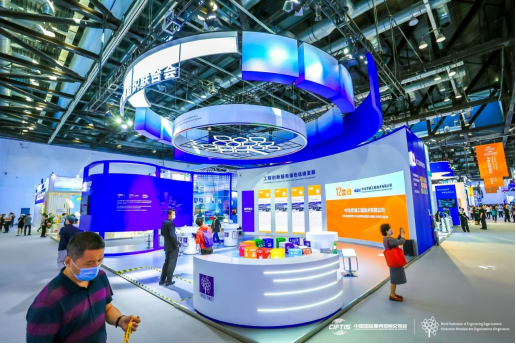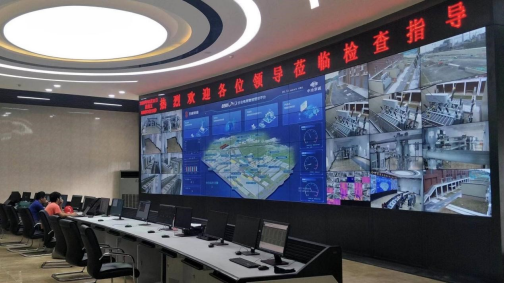The World's First Set of Enterprise Power Grid Intelligent Management and Control System for The Iron and Steel Industry Created By CERI Shown at 2022
Recently, at the China International Fair for Trade in Services (CIFTIS) 2022, CERI debuted the "Study and Application of the World's First Set of Enterprise Power Grid Intelligent Management and Control System for the Iron and Steel Industry," which was selected as one of the "Top 10 Cases of Green and Low-Carbon Development Supported by Engineering Innovation" by the World Federation of Engineering Organizations (WFEO). This demonstrated CERI's leading technical strength in terms of green and low-carbon development and intelligent manufacturing in the iron and steel industry.
The world's first set of enterprise power grid intelligent management and control system for the iron and steel industry is an all-in-one power grid solution developed by CERI based on the CPS system to comply with the current trend and maximize corporate energy utilization. It is suitable for tens of millions of tons of iron and steel companies. This technology helps companies greatly improve intelligent power grid management, maximize the utilization of self-generated power, reduce personnel costs, save electricity expenses, ensure less loss from the power outage, and cut down O & M costs.
Adopting the CPS system, CERI focuses on the power flow control of grid interconnections, and aims to ensure effective grid equipment O & M based on safe grid operations. With these in mind, it has conducted technology research on safe power grid operations, rapid control of automatic power flow in the "power supply, grids, load and energy storage" system, full life cycle management of power supply and distribution equipment, intelligent control of new energy and targeted identification of grid faults, as well as real-time analysis and early warning. Based on the above effort not only helps iron and steel companies to ensure secure and stable grid operations, enable integration of the information system and the power grid, and solve various problems in grid construction, management, and O & M, but also provides an integrated intelligent solution for industrial development. All these measures improved power management and power utilization efficiency, and ensured economical and efficient consumption of power from clean energy.
This new set of key technologies for intelligent low-carbon power grid management enables safe grid operations, automation of power flow control, intelligent grid scheduling, panoramic data collection, standardized equipment O & M, intelligent accident handling, visualization of intelligent interconnection, and orderly and efficient electrical power consumption. Based on this, it brings about a major change in grid management, enables power flow control for grid interconnections, ensures most effective distribution of electricity loads in peak and off-peak periods, and tremendously increases the utilization of self-generated electrical power and the consumption of new energy. Besides, it represents the first step of an iron and steel company to maximize the utilization of energy, and its management concepts and theories can be extended to the management of other energy resources.
After being successfully promoted and applied in projects of Fengnan Iron & Steel Co., Ltd., Shiheng Special Steel Group Co., Ltd., and Linyi Iron and Steel Investment Group, this technology has generated massive economic benefits. Targeted monitoring of electricity ensures the effective operation of a virtual power plant and enables the state grid to better formulate power generation plans, thus reducing coal and natural gas utilization while cutting down carbon dioxide emissions. In the example of Fengnan Iron & Steel Co., Ltd., the automatic control of this technology platform enables efficient coordination between power generation and consumption equipment, and maximizes the utilization of self-generated power from generating units using surplus energy. This saves 330 million kWh of electricity per year, and cuts down 330,000 tons of carbon dioxide emissions.


